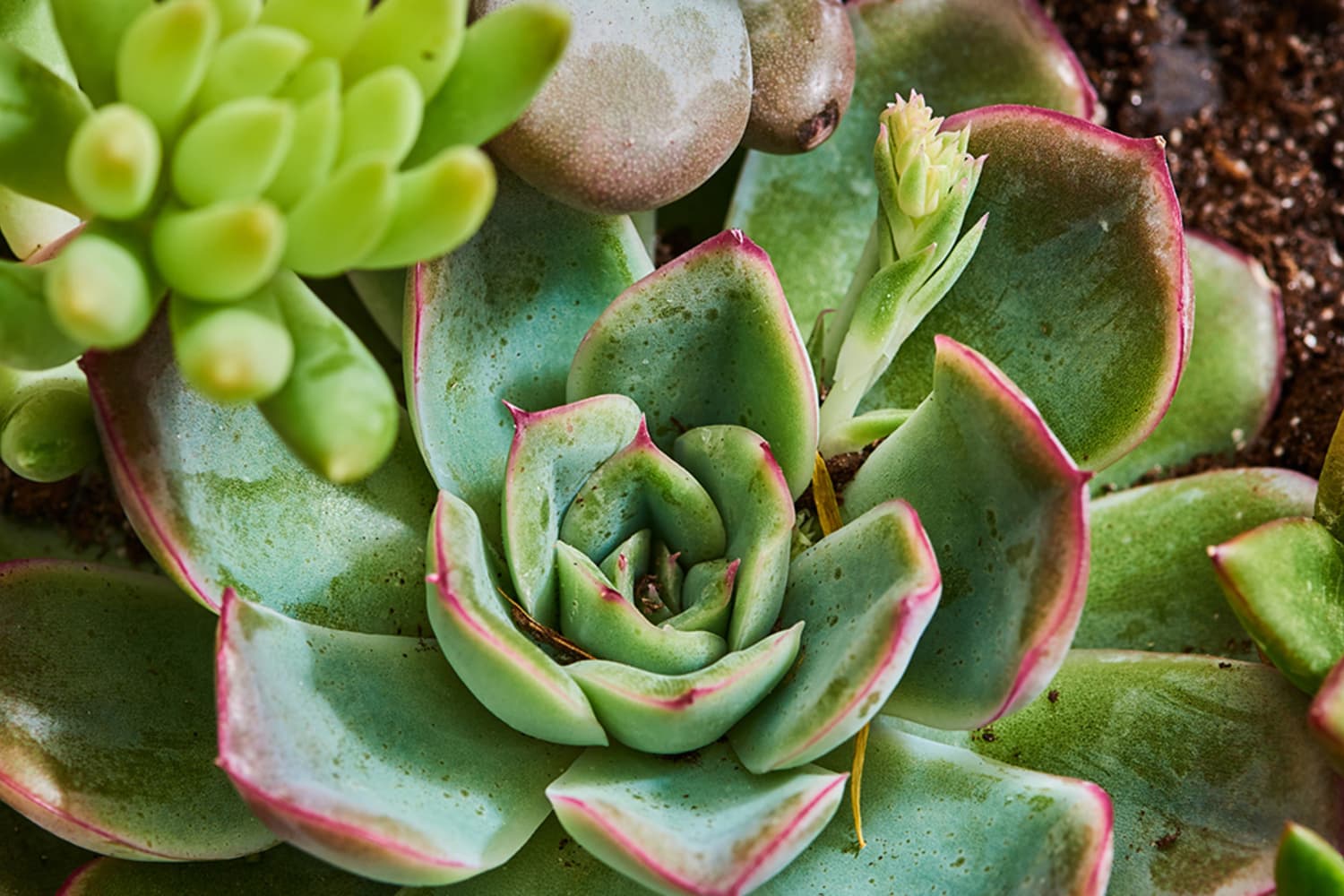Source www.apartmenttherapy.com
Welcome to our comprehensive guide on caring for echeveria, a beautiful and popular succulent plant that adds a touch of elegance to any indoor or outdoor space. Whether you’re a seasoned succulent enthusiast or a beginner looking to nurture your first echeveria, this article will provide you with the essential knowledge and tips to ensure your plants thrive and flourish.
In this guide, we will cover various aspects of caring for echeveria, including sunlight requirements, watering techniques, soil composition, propagation methods, and common pest control. By implementing these best practices, you’ll be able to maintain healthy and vibrant echeveria plants that will be the envy of any succulent lover.
Sunlight and Location
Providing Adequate Sunlight
Echeverias are native to arid regions and thrive in bright sunlight. When determining the ideal location for your echeveria, it is crucial to consider their sunlight requirements.
Place your echeveria in a spot that receives at least 6 hours of direct sunlight daily. South-facing windows or outdoor areas with ample sunshine are ideal for these sun-loving succulents. If you live in a region with scorching summers, some afternoon shade might be beneficial to prevent leaf burn.
Indoor vs. Outdoor Placement
While echeverias are well-suited for outdoor gardens, they can also thrive indoors if provided with adequate light. When growing echeveria indoors, choose a sunny windowsill or use artificial grow lights to supplement the sunlight they receive.
If you decide to place your echeverias outdoors, ensure they are planted in well-draining soil and protected from extreme weather conditions. Consider acclimating them gradually to the outdoors to prevent sunburn and shock.
Watering Techniques
Finding the Right Watering Balance
Proper watering is essential for echeveria, as these succulents are adapted to survive in arid environments with periodic rainfall. Finding the right watering balance is crucial for their overall health and growth.
Allow the soil to dry out completely between watering sessions. Overwatering can lead to root rot and other issues, while underwatering can cause dehydration and shriveling of the leaves. Observe the plant and adjust your watering schedule accordingly, considering factors such as the climate, season, and pot size.
Watering Techniques for Indoor and Outdoor Plants
When watering echeveria, thoroughly wet the soil until the excess water drains out through the drainage holes. Discard any water remaining in the saucer or tray to prevent waterlogging.
For indoor plants, utilize a watering can or a narrow-spout container to ensure targeted watering. When watering outdoor echeverias, use a gentle stream of water to avoid displacing the soil or damaging the delicate leaves.
Soil Composition and Potting
The Perfect Soil Mix
Echeverias require well-draining soil to prevent waterlogged roots, which can lead to root rot. The ideal soil mix for echeveria should be lightweight, loose, and allow water to quickly pass through.
A recommended soil mix for echeverias consists of 50% regular potting soil and 50% perlite or pumice for better drainage. Alternatively, you can purchase pre-mixed succulent and cactus soil from garden centers or create your own by amending regular potting soil with sand and perlite.
Pot Selection and Repotting
Choosing the right pot is crucial for the healthy growth of echeveria. Select a pot with drainage holes to ensure excess water can escape, preventing waterlogging. Terra cotta pots are excellent choices as they allow air circulation and absorb excess moisture.
When repotting echeveria, do so during the spring or summer months, when the plants are actively growing. Carefully remove the plant from its current pot, gently loosen the roots, and place it in a slightly larger pot with fresh soil. Avoid over-potting, as echeverias prefer snug spaces.
Table Breakdown
| Aspect | Details |
|---|---|
| Sunlight Requirements | 6 hours of direct sunlight daily, south-facing windows preferred. |
| Watering Frequency | Allow soil to dry out completely between watering sessions. |
| Soil Mix | 50% regular potting soil, 50% perlite or pumice for better drainage. |
Frequently Asked Questions (FAQ)
1. Can I grow echeveria indoors?
Yes, echeverias can be grown indoors as long as they receive adequate sunlight or supplemental grow lights.
2. How often should I water my echeveria?
Watering frequency depends on various factors, but allowing the soil to dry out completely between waterings is generally recommended.
3. What common pests should I watch out for?
Echeverias can be susceptible to mealybugs, aphids, and spider mites. Regularly inspect your plants for signs of infestation and take appropriate measures if necessary.
4. Can I propagate my echeveria?
Yes, echeverias are relatively easy to propagate. You can propagate them through leaf cuttings or by separating offsets, also known as pups, from the mother plant.
5. How do I prevent leaf rot?
To prevent leaf rot, avoid getting water on the leaves during watering and ensure adequate air circulation around the plant.
Conclusion
Caring for echeverias can be a rewarding and enjoyable journey, allowing you to appreciate the beauty and resilience of these stunning succulent plants. By providing adequate sunlight, watering with precision, using the right soil mix, and implementing proper potting practices, you can ensure the long-term health and success of your echeverias. Remember to regularly monitor your plants, address any issues promptly, and enjoy the process of tending to these delightful living treasures.
